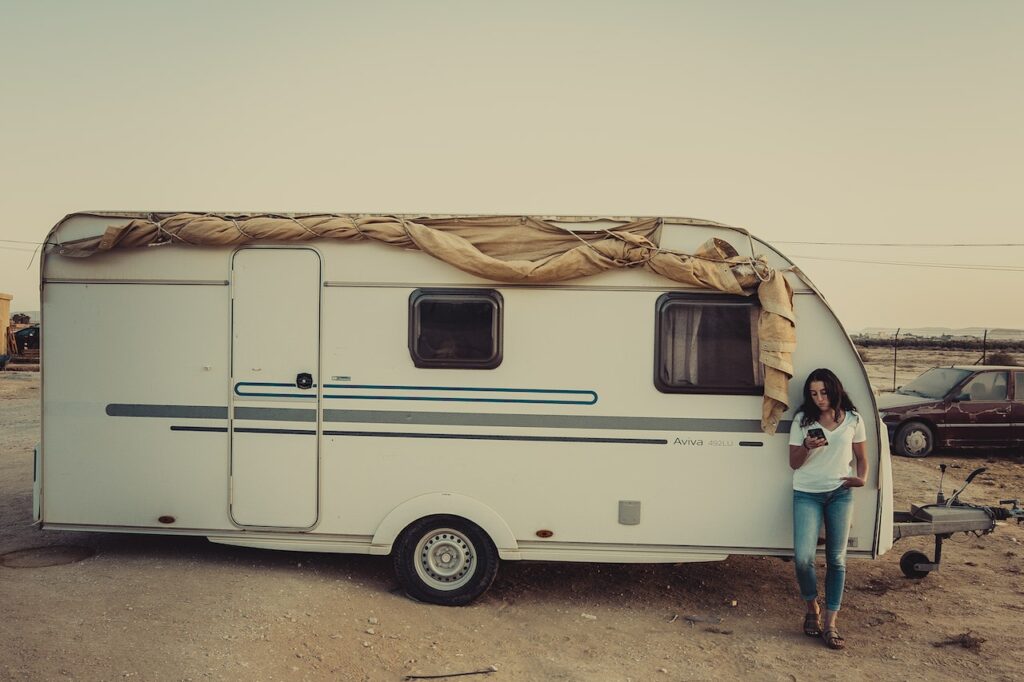Old mobile homes can be an excellent option if you’re looking for comfortable living spaces that fit your budget. However, just like any home, they often develop unique maintenance needs as they age, requiring some attention to ensure your investment lasts.
If you’re considering buying an older unit, be prepared to manage the most common problems with manufactured homes.
Below is a common checklist of potential issues to look out for and practical solutions for owners looking to maintain these investments and improve their resale value.

Structural Wear and Foundation Issues
Understanding the most common problems in older mobile homes can help you take proactive steps to preserve their condition. Many manufacturers and construction experts recommend purchasing newer manufactured homes. From the 1960s to the 1970s, newer models followed stricter and higher build quality standards. New builds today are far superior and easier to maintain.
One of the most common problems with mobile homes that have been around for a while involves damage to their foundation and other types of structural wear. These are some of the most critical areas to monitor in an older mobile home. Over time, factors like shifting ground, improper leveling, or weakened anchoring can create structural wear, leading to noticeable issues.
Popular Foundation Structures
In Colorado, Texas, and Arizona, where the climate is arid and soil conditions vary, mobile homes commonly use foundation types adapted to dry, shifting soils and extreme temperature changes.
Here are popular foundation options for old mobile homes in these areas:
- Pier and Beam Foundations: This is one of the most popular foundation types for mobile homes in Texas and Arizona. Piers, usually made of concrete, steel, or masonry, are driven into the ground to support beams that, in turn, support the home.
- Concrete Pads or Slabs: Concrete pads are a popular choice for manufactured homeowners in Colorado and are also commonly used, especially in areas with stable soil. This type of foundation involves pouring a concrete slab that serves as a sturdy base, and the home is typically anchored to the pad to increase stability.
- Crawl Space Foundation: In some cases, mobile homes may sit on a short wall foundation, creating a crawl space. This foundation provides better ventilation and easier access to utilities under the home, which is useful in hot climates where heat can build up under the structure.
- Engineered Foundation Systems: In areas with shifting or expansive soil (common in parts of Texas), engineered foundation systems accommodate soil movement.
Since one of the most common problems with manufactured homes occurs with the foundation, it’s best to choose the top-grade products that best suit your property’s needs.
Signs of Foundation Problems
Symptoms of foundation issues may seem subtle. Pay attention to the signs below, as they can signal mobile home problems you’ll want to address promptly:
- Cracks in walls or floors.
- Doors and windows that don’t close properly.
- Sagging or uneven floors.
Schedule regular inspections to prevent further damage and other structural problems with mobile homes. Observe any visible cracks or uneven areas in the home’s structure annually.
Foundation Reinforcement
If you detect any of the issues above, the best course of action is to hire a trusted contractor to assess and reinforce the foundation to prevent further shifting.
Professional reinforcement techniques may include installing additional piers to support weak areas, helical or push piers to stabilize shifting soils, or underpins with concrete footings to add strength.
Roof and Structural Integrity
After ensuring your foundation is sound, you should turn your attention to the roof. Like foundations, a well-maintained roof is essential for a mobile home’s durability.
Common problems with mobile homes include roof deterioration, leading to leaks, corrosion, and compromised insulation. If left unaddressed, these problems can cause significant damage to the interior and exterior of the home.
Some of the telltale signs to look for include:
- Water stains on the ceiling.
- Visible sagging areas or damaged shingles.
- Corrosion or rust spots on metal roofs.
Regular roof inspections help catch these mobile home problems early. Look for missing shingles, rust, or soft spots. Patch small holes or cracks with a sealant and replace any damaged shingles. Consider applying a weatherproof coating for additional protection.
Plumbing Complications
After working on the roof, plumbing is next on the list of common problems with manufactured homes. Aging pipes and fittings are more prone to leaks, corrosion, and water pressure issues.
Some of the signs to watch out for include:
- Low water pressure.
- Water stains under sinks or around plumbing fixtures.
- Mold or mildew smells.
If corrosion or recurring leaks are present, replacing old pipes with newer, durable materials can improve longevity. In addition, an annual flushing of the water heater in old mobile homes can prevent sediment buildup and improve heating efficiency.
Outdated Electrical Systems
Older mobile homes often contain outdated wiring, overloaded circuits, and limited outlets. If these systems are not updated, they can pose serious safety risks.
Some of the signs of outdating electricals to watch out for include the following:
- Flickering lights or tripping breakers.
- Warm or discolored outlets.
- Inconsistent power supply to appliances.
Hire a licensed electrician to replace old wiring, install grounded outlets, and add more outlets if needed. To prevent overloads, avoid plugging multiple high-wattage appliances into a single circuit.
Insulation and Energy Efficiency Decline
After handling electrical issues, the next step is to inspect the insulation. Poor insulation in old mobile homes can lead to drafts, increased energy bills, and uncomfortable indoor temperatures. Over time, insulation materials degrade, reducing their effectiveness.
Poor insulation can often bring:
- Cold spots, drafts, and high heating or cooling bills.
- Condensation on windows and walls.
Consider adding insulation to the walls, floors, or ceilings, especially in colder climates. Caulk and weather-stripping around windows and doors can also prevent drafts and improve energy efficiency.
Weak or Uneven Flooring
Weak flooring is another concern in older mobile homes, resulting from water damage, shifting foundations, or everyday wear and tear. Old floors can create tripping hazards and structural concerns.
Floor damage can have:
- Soft spots or uneven flooring.
- Creaking sounds when walking.
Inspect floorboards annually to detect soft spots or weak areas. Small soft spots can be patched quite easily. However, extensive floor damage may require professional replacement.
Window and Door Seal Degradation
In addition to the floorboards, seals around windows and doors can wear out over time, resulting in drafts, moisture, and temperature fluctuations.
Run a candle around the edges of windows and doors to test for drafts. Any sign of flickering indicates a draft. Apply caulk and weatherstripping to stop air leaks.
Mold and Moisture Issues
After handling drafts, mold and moisture issues are next on our list of mobile home problems. Older mobile homes are susceptible to mold due to leaks and plumbing problems, which can pose health risks if left untreated.
Some of the signs of mold growth include:
- Musty odors or visible mold spots.
- Stains on walls or ceilings, often near plumbing or windows.
Here are some useful steps to prevent and manage mold:
- Use exhaust fans in high-moisture areas like bathrooms and kitchens.
- If you notice any growth, wipe down on those areas, especially in places prone to moisture.
- Clean them with a mold-inhibiting solution to prevent further growth.
Why Proactive Maintenance Matters for Older Mobile Homes
Regular inspections and timely repairs help prolong the life of an older mobile home. By identifying and addressing problems in the checklist above, you can avoid expensive repairs and ensure that your home lasts longer. Routine maintenance can also improve the overall resale value of your property.
Note that some tasks, such as sealing windows or checking for leaks, can be completed using DIY methods, which can help you save on costs. However, professionals should handle structural issues, electrical repairs, and extensive plumbing problems to ensure quality results.
Basic Components provides everything you need to maintain and enhance your mobile home’s integrity, all under one roof. Explore our solutions to keep your home in peak condition. Contact our team to learn more about solutions for aging mobile homes.

